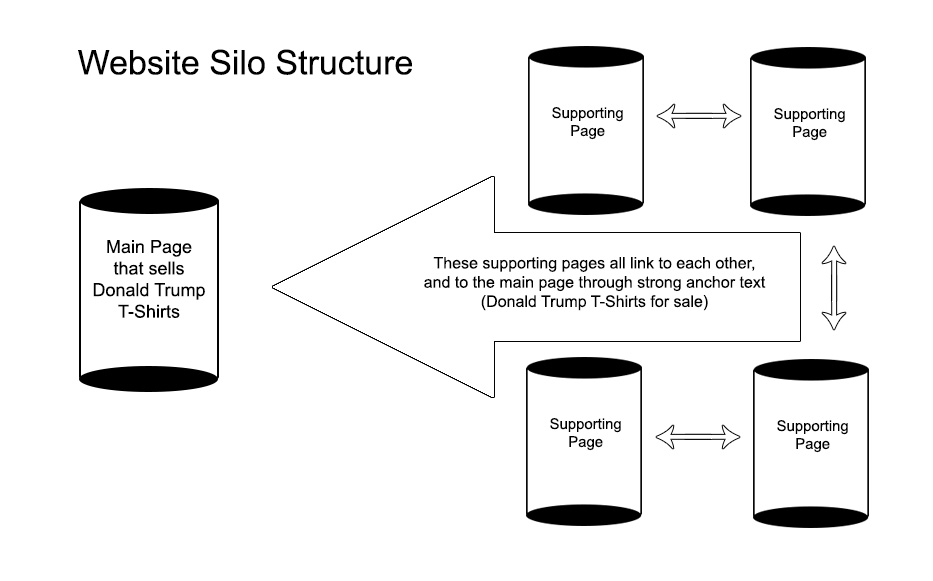This is something I only ran across recently and it’s very interesting in it’s potential impact for SEO.
Don’t worry, we’re not talking about farming. Although the term means something similar in both fields – you put all your grain in one silo, all your corn in another silo, etc.
In a website silo structure, you try to put all your SEO influence for one particular keyword phrase into ONE page.
Here’s how it works.
Let’s say I sell Donald Trump T-Shirts (relax, just an example). I want my page to rank in Google as high as possible whenever someone searches for Donald Trump T-Shirts. We’ll call this the main page.
So I have my main page created, and it’s optimized for that keyword phrase. Next, I create a few “supporting” pages. These pages all relate to my main page.
One supporting page could be about Donald Trump’s business ventures. Another could be about his TV show. Another could be about his political career, family life, and so on. And they would all link to the main page.
The important thing about these sub-pages is that:
- They all are related to the main page in content
- They don’t duplicate the main page, only provide supporting, related information
- The sub-pages link to each other
- The sub-pages link to the main page (obviously, this is the whole point)
- Surprisingly, the main page does not link back to the supporting pages
The reason for the lack of a reciprocal link is that you want all the emphasis to be on the main page. By not linking back to the supporting pages, it’s like you’re sending a message to Google that the main page is the top dog. This gives the main page all the SEO clout.
So…what does this do again?
The point of a web silo is to focus all your SEO power into a single page. By creating these supporting pages, and linking to the main page, you’re showing Google which one is most important. It’s like you’re combining the power of 5 pages into a single, very powerful SEO page.
Where are these pages found in the site map?
For the main page, it should be featured prominently in your website navigation. Maybe as a top category, altough more likely it will be a sub-category. For example, in our example it would probably be something like Clothes -> T-Shirts -> Donald Trump T-Shirt.
But maybe your website doesn’t sell such a wide line of clothes, so maybe it’s just T-Shirts -> Donald Trump T-Shirt. Whatever the case may be, the point is that it is typically just in the natural nagivation of the website.
The supporting pages are usually a little different. We recommend that every website has a blog. It’s probably in the blog that these supporting pages will spring up from. By themselves, the don’t amount to much, they’re just their to support the main page.
Tips to follow when creating a silo structure
- The recommended silo structure is 5 pages – 1 main page and 4 supporting pages
- Use keyword heavy anchor text when linking internally in your silo structure
- Don’t spam your anchor text by linking multiple times from the same page – honestly once is probably enough but definitely no more than twice
- Try to use around 300 words per page
- The URL of your supporting pages in the blog should be categorized. So something like ahref=”/blog/seo/5-tips-to-website-silos.html
- Remember that in 2017, quality is more important than quantity. We have to write somewhat naturally, as opposed to what worked in years past. (read about SEO trends for 2017 here for more on this topic)
- Avoid duplicate content


